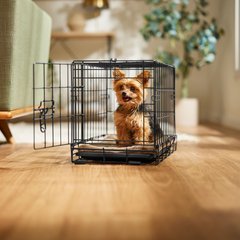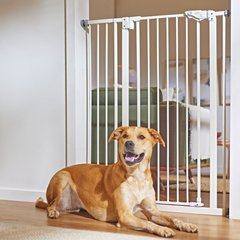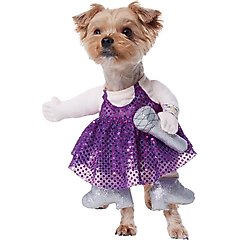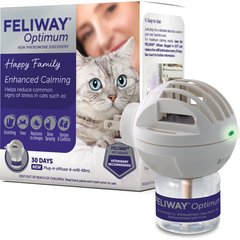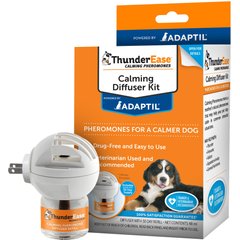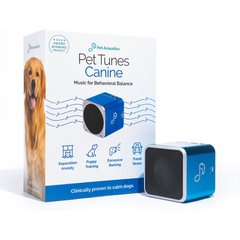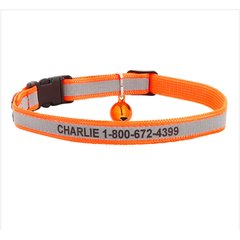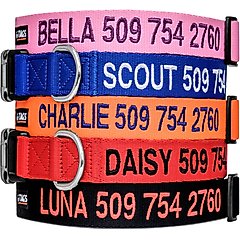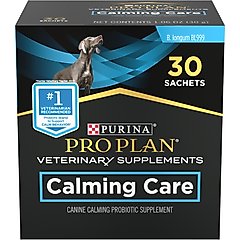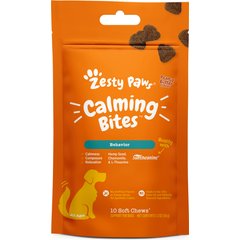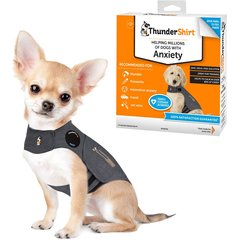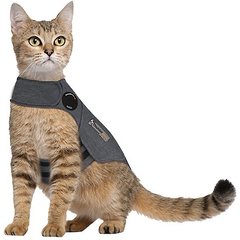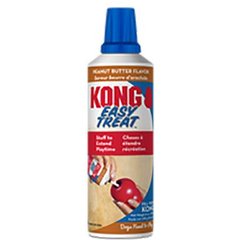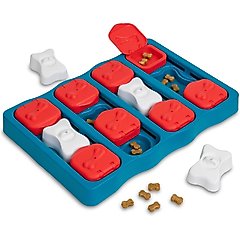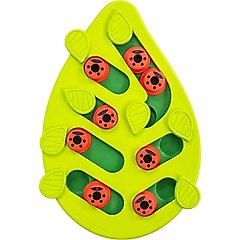These 6 Halloween Pet Safety Tips Are Fright-Night Necessities

Photo by JasonDoiy/E+ via Getty Images
Halloween should be full of treats, the occasional trick, and plenty of adorable pet Halloween costumes filling your social media feeds.
Unfortunately, it’s also full of potential dangers to our pets, from pet costume blunders and toxic treats to even electrical shock.
That’s where these Halloween pet safety tips come in.
Key Takeaways:
- Keep all Halloween treats, especially chocolate and sugar-free candies, out of reach of pets to avoid toxic reactions.
- Not all dogs and cats like to wear costumes (no matter how cute they may look in them), so make sure to choose one that fits well and doesn’t cause stress.
- Create a calm, secure space for your pet on Halloween night to reduce the risk of escape and anxiety from increased activity and noise.
6 Halloween Pet Safety Tips
With the help of vet experts, we put together a list of ways to keep dogs and cats safe this spooky season, from keeping them out of your candy stash (and especially away from chocolate!) to decorating wisely (no dangling cords!) and more.
Following these tips can be the difference between a night of scary, good fun and a night that’s just plain scary.
Bonus: We’ve even included a graphic that you can print and hang on your fridge so everyone in your household will be in the know.
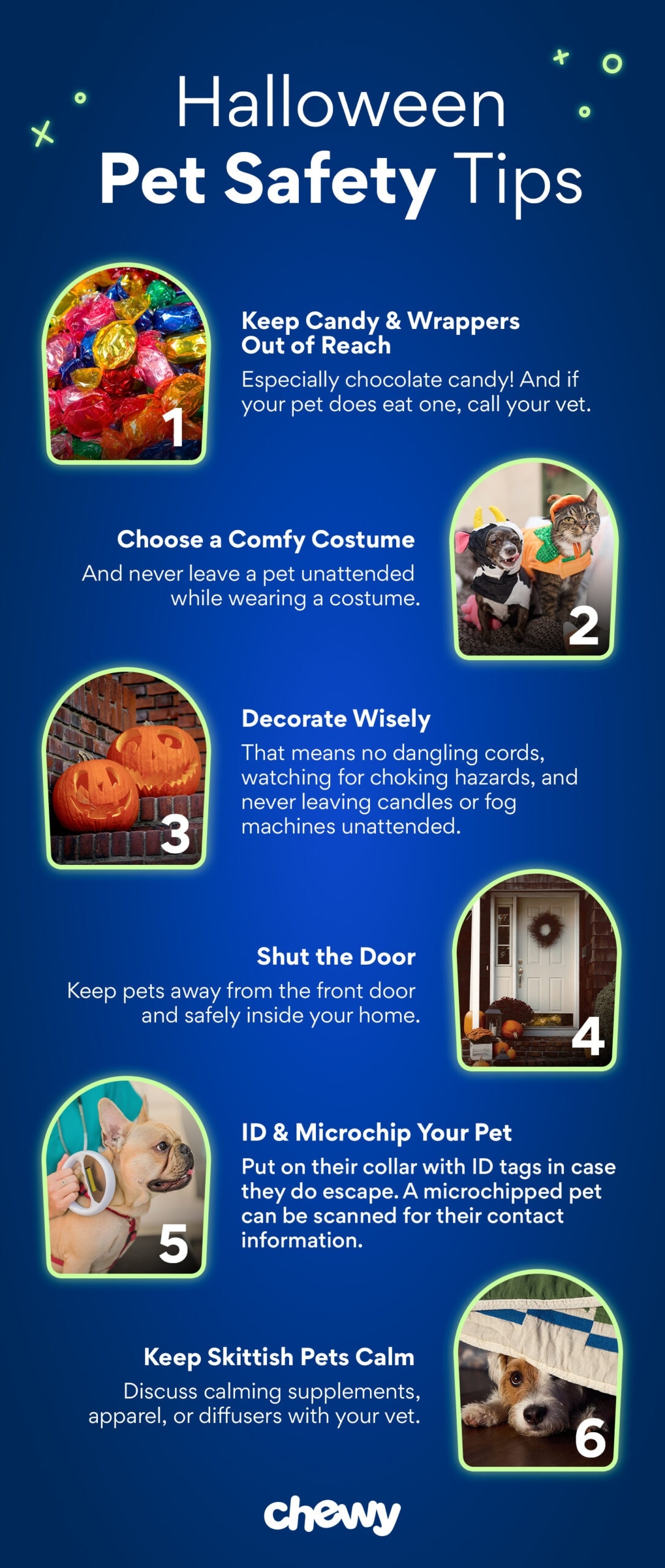
Photo by Chewy
1. Keep Candy Out of Your Pet’s Reach
When it comes to Halloween pet safety, keeping all that Halloween candy out of reach of dog and cat counter-surfers is essential.
While your pet should never eat any kind of candy, there are some types of Halloween candy that are particularly toxic to pets, including:
- Chocolate: This sweet treat is poisonous to dogs due to the theobromine found in it, which dogs have a harder time digesting.
- Raisins and chocolate-covered raisins: Raisins can be extremely toxic to dogs and could lead to kidney failure.
- Sugar-free candy: Xylitol is an artificial sweetener found in many foods, including certain sugar-free candies. It’s extremely toxic to dogs and can cause low blood sugar, seizures, liver failure, or death.
- Caramel apples: Super sweet caramel is never a good idea to feed pets. Second, the seeds inside of apples can make your dog ill as they contain a form of cyanide.
- Candy corn: “Signs associated with ingestion of large amounts of sucrose and glucose [found in candy corn] are going to be gastrointestinal,” says Leonel Londoño, DVM, DACVECC, clinical assistant professor of emergency and critical care at the University of Florida College of Veterinary Medicine in Gainesville, Florida. “With severe diarrhea and vomiting, signs of dehydration and abdominal pain may also develop, requiring veterinarian attention.”
- Macadamia nuts: These nuts are highly toxic to dogs and eating even a small amount can cause weakness, tremors, and lethargy in dogs.
Remember to keep all Halloween candy—including candy wrappers—away from your pet. Consider storing it in a locked or high cabinet that even the most athletic pets won’t be able to access.
If you have a dog, you can keep them in a dog crate or behind a dog gate away from any sugary treats when they’re unsupervised. Cats may require floor to ceiling cat gates to separate them from areas with candy during spooky season.
Recommended Products
If you suspect your pet has eaten anything toxic, call your vet or the Pet Poison Helpline at (855) 764-7661.
For a pet-friendly Halloween treat, try whipping up DIY peanut butter cup dog treats so your pup can join in on the fun.
2. Choose a Comfy Costume
There are so many adorable costumes out there for pets of all kinds. But while there may be, in theory, a costume for every pet, not every pet wants to dress up—and that’s OK! It’s important that all pets feel comfortable.
Follow these tips when dressing up your pet for Halloween:
- Choose a comfortable costume that fits properly, doesn’t restrict movement, and doesn’t hinder your pet’s ability to breathe.
Recommended Products
- Take off the costume if your pet displays any signs of stress or discomfort, which can include pacing, hiding, or refusing to move, according to Bethany Howe-Fanning, DVM, CVA, of Hawkins Animal Hospital and Wellness Center in Ronkonkoma, New York.
- Check the costume before the big night to make sure there are no loose buttons or embellishments that your pet could tear off and swallow.
- Ensure their Halloween fashion show is brief. Your pet might be game for a quick Instagram photo session in their costume, but they may become uncomfortable if left in their outfit for too long.
- Never leave your pet alone when they’re dressed in their costume. You need to keep an eye on them in case of a costume malfunction, like if their costume gets caught on something.
To help you find the perfect costume for your pet, our editors rounded up the best Halloween costumes for dogs and the best Halloween costumes for cats.
3. Avoid Dangerous Halloween Decor
Some Halloween decorations can also pose a Halloween pet safety risk, such as:
- Electrical cords: Pets can easily chew on them and get an electric shock or get tangled up. Choose decorations that run on batteries, rather than electrical cords. If you can’t get around not having electrical cords, ensure you have a safety protector like the MyPet Safety Cord Protector.
Recommended Product
- Fog machines: You don’t want them to consume the possibly toxic solution. Keep these away from pets or pass on them, period.
- Glow sticks: Some pets may mistake these for chew toys. Like fog machines, you don’t want them to consume the possibly toxic solution.
- Candles: Lit candles on their own or in jack-o’-lanterns are seasonal favorites, but they are fire hazards. Dogs and cats can easily knock them over or burn themselves. So, opt for faux candles or keep them in an area out of your pet’s reach.
- Small decorations or decorations with small baubles: These can be a choking hazard. Skip these types of decorations.
4. Keep Them Away from The Front Door
Nothing is scarier than the thought of one of your pets getting loose. To prevent your pet from slipping out of the house:
- Keep pets away from the door. With the front door opening and closing so often on Halloween night, it’s best to keep pets away from the door and all the action to prevent them from slipping out. Consider a pet gate to help keep some separation.
- Keep your pets safely crated. During trick-or-treating hours or if you’re having friends over for a Halloween get-together, the best course of action is to keep your pets safely crated and out-of-sight of the front door, advises Dr. Howe-Fanning.
- Keep them in a secure, quiet room. Be sure you add some creature comforts to their secured space such as their bed, water, food, your cat’s litter box, and a favorite toy. It’s also helpful to have a calming pheromone diffuser plugged in, and play a calming pet playlist or a pet-specific calming music speaker so they don’t hear all the noise outside.
Recommended Products
5. Update Their ID Tags
Should your pet slip out of the house, proper identification can help get them home safe and sound—and quickly too.
Double check that their collar and ID tag are all secure and up to date.
Recommended Products
If your pet is microchipped, ensure that your contact information is correct in the microchip company’s database.
If your pet isn’t already microchipped, talk to your vet about the simple procedure to provide future peace of mind.
6. Keep Them Calm
Prepare for a rise in neighborhood activity—and the anxiety it may bring your beloved animals.
Trick-or-treaters ringing the doorbell throughout the night, encountering people in costumes during your evening walk, and scary sound machines set up outside houses can stir up stress in pets.
Watch for signs of stress and anxiety in cats and dogs, including:
- Panting
- Hiding
- Excessive vocalization
- Pacing
- Going to the bathroom in the house (or, for cats, outside of the litter box)
If you notice any of these signs, contact your vet to rule out any medical problems and if none exist, consider a calming supplement or calming apparel to help ease their symptoms on potentially stressful days, such as Halloween night.
Calming Supplements
Calming supplements for dogs and calming supplements for cats can be helpful in stressful situations. They come in various forms—including chews, powders, pills, and capsules—so pick one that will be easiest to administer for your pet. It should also be formulated for your type of pet.
Some vet-recommended calming supplement brands include Nutramax Solloquin, Purina Pro Plan Veterinary Supplements, and Zesty Paws.
Recommended Products
Just be sure to talk to your vet before giving your pet any new supplements.
Calming Diffusers
Calming diffusers such as the Adaptil diffuser for dogs and Feliway diffuser for cats are another option to consider. These diffusers are made to release special dog- and cat-appeasing pheromones to help pets feel safe and secure.
Keep in mind that it can take up to six weeks for a calming diffuser to have a positive effect on your pet’s behavior, so it’s best to set this up before an anxiety event to get them used to it.
Calming Apparel
ThunderShirt is designed to hug your pet with gentle, constant pressure to potentially calm fear and anxiety. There are versions for both dogs and cats, so all your furry family members can reap the benefits.
Recommended Products
Food and Puzzle Toys
A treat-dispensing toy or food puzzle can keep your dog happy, busy, and engaged in a fun activity that distracts them from visitors, people in costumes, and unusual noises on Halloween that can trigger stress and anxiety. You can give your dog a toy or puzzle in their safe space or kennel, away from the front door.
Options include:
- Snuffle mats with food hidden inside
Recommended Product
- A food toy stuffed with canned food or a squeezable treat (you can freeze them ahead of time to help make the activity last longer)
Recommended Products
- Problem-solving puzzles with food pieces hidden inside
Recommended Products
- Lick mats that can hold dry and canned food
Recommended Product
While caring for your pet on Halloween can present challenges, following these tips can ensure everyone in your family stays safe and has a happy Halloween.
